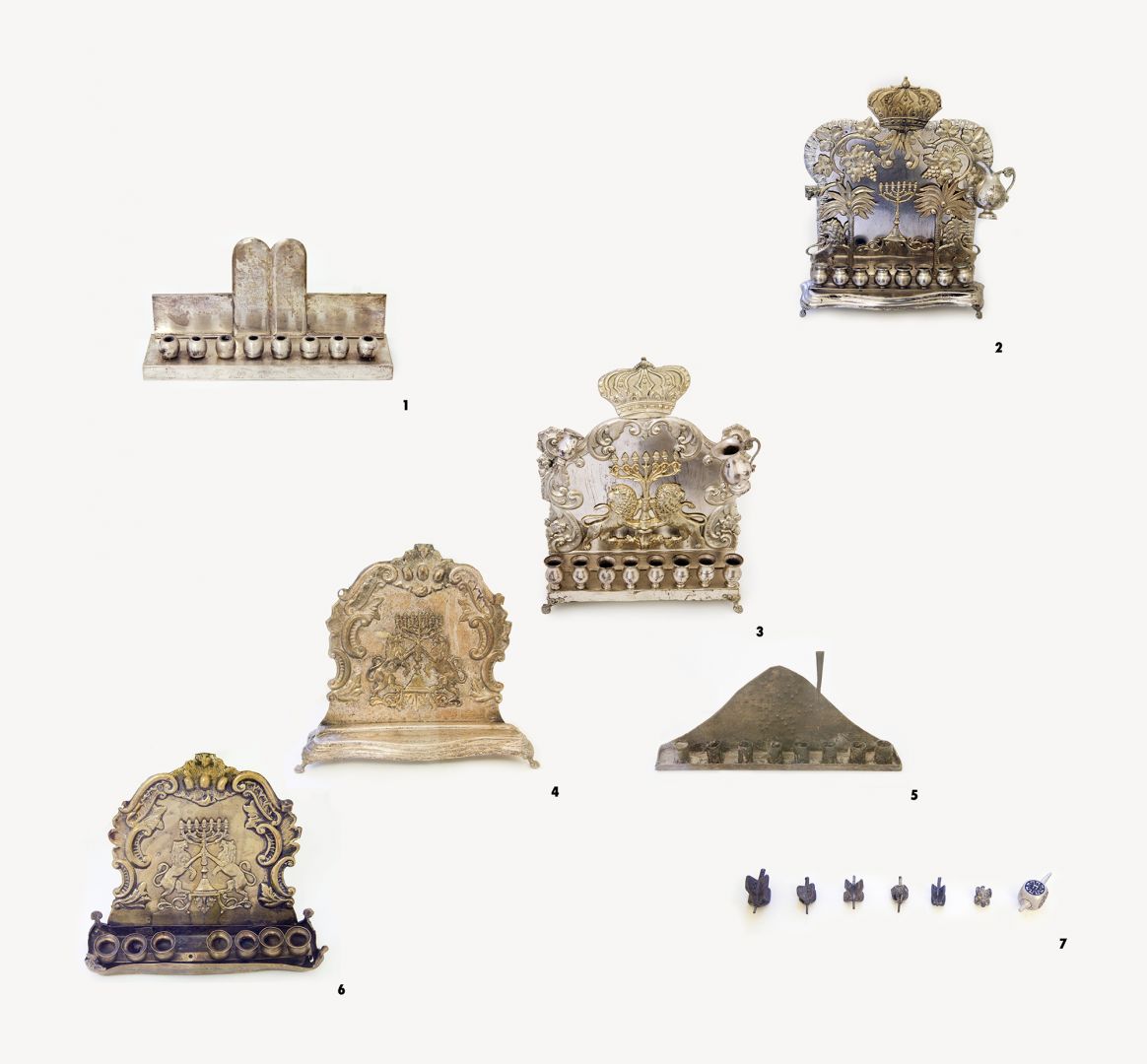3. Hall - 2. view
Hanukkah lamps
1.
"Bauhaus" Hanukkah lamp
This simple Hanukkah lamp, which was made in the 1920s or 30s, shows the influence of Bauhaus with its clean lines. On the backboard are the double Tables of the Ten Commandments, on which the commandments were written with novel typographic Hebrew letters by the creator whose initials were ED.
2.
Hanukkah lamp
Hanukkah lamp of the widow of Neuberger Ignác. By the end of the 19th century the firm of Jakubowski and Jarra became a major supplier of silverware in the eastern part of the Austro-Hungarian Monarchy. Due to the significant market, they also made judaica including the beautiful piece displayed , ornamented with palm trees, lions and shape of the menorah of the Temple. The Hanukkah lamp was donated to the museum by the widow of Neuberger Ignác in 1911.
3.
Hanukkah lamp
Hanukkah lamp by Jakubowski and Jarra. This Hanukkah lamp by Jakubowski and Jarra, where the lights are to be lit in small oil pots, is similar to the previous one though its design is a little simpler.
4.
Hanukkah lamp
A cheaper version of the Hanukkah lamp. This silvery brass Hanukkah lamp is an even simpler and cheaper version of the former one.
5.
"Poor" Hanukkah lamp
Very simple poorly decorated Hanukkah lamp, the only ornamentation is the indented star motif on its backboard.Its origin is unkown.
6.
Hanukkah lamp
A cheaper type of Hanukkah lamp by Jakubowski and Jarra. The Hanukkah lamp follows the trendy shape which has stood the test of time, but it is already made from the cheaper brass.
7.
Trenderli
Dreidels. The dreidel is a spinning top that children play with during Hanukkah. Each side of the top bears a letter from the Hebrew alphabet: these four letter form the acronym of the phrase 'Nes Gadol Hayah Sham' = a great miracle happened there. The rules of the game can be interpreted in Yiddish. N=nisht (nothing), G=gantz (all), H=halb (half), S=Shtel (put in). Therefore, if the dreidel lands on the N, the spinner gets nothing from the ante on the table (nuts, candies, etc.). If G is facing up, the player wins everything. If H is facing up the player gets half of it and if S is facing up, the spinner has to put another unit into the ante. A dreidel can be made from anything; in Eastern Europe, it was customary for children to cast it from lead.
